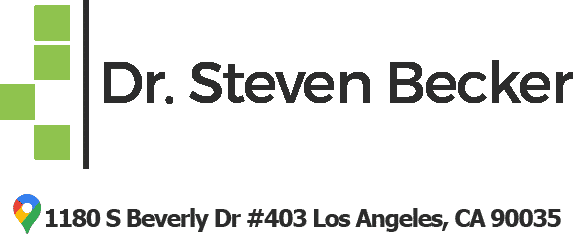Trigeminal Neuralgia?
Trigeminal neuralgia, also called tic douloureux, is a chronic neurologic pain syndrome that affects the trigeminal or 5th cranial nerve, one of the most widely distributed nerves in the head and face. Trigeminal neuralgia is considered by many specialists to be the one of the most debilitating and painful syndromes a person can have.
The trigeminal nerve travels from the brain stem, in the lower brain, to relay sensory signals from the face. The sensory trigeminal nerve nuclei are the largest of the cranial nerve nuclei, and extend through the whole of the midbrain, Pons and medulla, and into the high cervical spinal cord.
The nucleus is divided into three parts, from rostral to caudal (top to bottom in humans):
- The mesencephalic nucleus
- The chief sensory nucleus (or “pontine nucleus” or “main sensory nucleus” or “primary nucleus” or “principal nucleus”)
- The spinal trigeminal nucleus
It is purported; however, that chiropractic adjustments may treat these areas directly. Trigeminal neuralgia paroxysms can actually precipitate from irritation of the trigeminal nerve, trigeminal ganglion, or the spinal nucleus. The late John D. Grostic, DC, after seeing that several of his patients with trigeminal neuralgia responded well to his care hypothesized, “It may be possible to put traction directly on the sensory nucleus of the trigeminal nerve at the level of the first and second cervical vertebra….Direct mechanical-vascular irritation of the spinal nucleus might also explain those cases in which surgical destruction of the ganglion or sectioning of the nerve fails to provide relief.”
Antomisits note that the neuroanatomical basis for cervicogenic headaches is due to a convergence in the trigeminocervical nucleus between the trigeminal nerve and the first three cervical nerves. Thus, any pain produced by structures innervated by these nerves (e.g. atlanto-occipital and lateral atlantoaxial joint, sternocleidomastoid, trapezius and paravertebral muscles) may be perceived as arising from the trigeminal area of the head. Anatomically speaking; therefore, we see a direct connection as to how and why an upper cervical chiropractic adjustment can have profound effects on the trigeminal nerve and, thus, on trigeminal neuralgia.
Well known since the 1970s, the trigeminal nerve is accompanied by both parasympathetic (rest and digest mode) and sympathetic fibers (fight and flight mode). In a 40 patient study, cervical chiropractic adjustments could manifest a shift in parasympathetic dominance in response to the parasympathetic nervous system. Therefore, it’s hypothesized that chiropractors can stimulate the parasympathetic nervous system and be able to possibly stimulate the trigeminal nerve directly to bring about desirable results.
This is no surprise in the research world. Numerous studies have been published, for example, substantiating chiropractics’ efficacy in properly managing and resolving rare and debilitating diseases like cephalgia vertigo, cervicobrachial neuralgia, fibromyalgia, intercostals neuralgia during pregnancy, myofacial pain syndrome, spinal neuralgia, and even increasing the CD4 counts on HIV positive patients.
The spinal trigeminal nucleus is further subdivided into three parts, from rostral to caudal:
As it travels from the brain stem it splits into three branches: the ophthalmic (upper branch) supplies sensation to the scalp and forehead, the maxillary (middle branch) carries sensation from the cheek, upper jaw, top lip, upper teeth and gums, and the mandibular branch (lower branch) supplies sensation to the lower jaw, lower teeth and gums and bottom lip.
What Causes Trigeminal Neuralgia?
Trigeminal neuralgia pain arises when one or more of the three paired branches of the trigeminal nerve are damaged or irritated, which can be associated with a variety of different factors including: blood vessel pressing on the trigeminal nerve as it exists the brain stem, demyelination of the nerve associated with MS, nerve entrapment in the muscles of the head or jaw, damage from sinus or oral surgery, stroke or direct trauma to the nerve itself from facial trauma.
Advances in imaging have also lead to several recently published research studies that suggest many of these symptoms may have a root cause in injury and/or misalignment of the upper cervical spine that can create venous congestion or direct irritation of the trigeminal nucleus that extends down to the first two vertebrae of the upper neck. This research helps explain way non-invasive procedures such as Blair Upper Cervical chiropractic care helps relieve trigeminal neuralgia in so many cases. To listen to what one patient says about his trigeminal neuralgia following Blair Upper Cervical Care listen here:Â http://bit.ly/1MY93u9
What are the Symptoms of Trigeminal Neuralgia?
Trigeminal neuralgia typically affects one side of the face but in some cases the pain may affect different sides of the face at different times and even more rarely it may affect both sides at the same time. There are two types of trigeminal neuralgia. Classic or typical (TN1) causes patients to experience extreme, sporadic shock-like or burning facial pain that lasts from a few seconds to as long as two minutes. The pain can occur suddenly and vanish or repeat in quick succession lasting several hours. Atypical (TN2) TN is described as more of a constant aching, burning or stabbing pain. Some people experience both TN1 and TN2 at different times and are often left feeling incapacitated both physically and mentally.
Both forms of Trigeminal neuralgia tend to be progressive with periods between attacks becoming shorter with the pain becoming increasingly worse and/or debilitating. Often forcing people to avoid social situations and normal activities of daily life to try and avoid an attack.
Blair Uper Cervical Chiropractic – A Natural Approach to Relieving Trigeminal Neuralgia
Upper Cervical Chiropractic care is a very precise and non-invasive procedure that uses specific measurements in posture, autonomic balance and anatomy to help create a gentle, lasting correction in the alignment and motion of the upper cervical spine. This correction improves brain body communication allowing the body to heal and may result in: reduction of spinal cord tension which relieves the irritation to the trigeminal nucleus in the upper neck and brain stem, establishes proper drainage of venous and lymphatic fluids alleviating possible blood vessel pressure on the trigeminal nerve, relaxed muscle tone reducing impingement on the branches of the trigeminal nerve, and proper movement of cerebro-spinal fluid (csf) reducing brain stem and blood vessel pressure.








